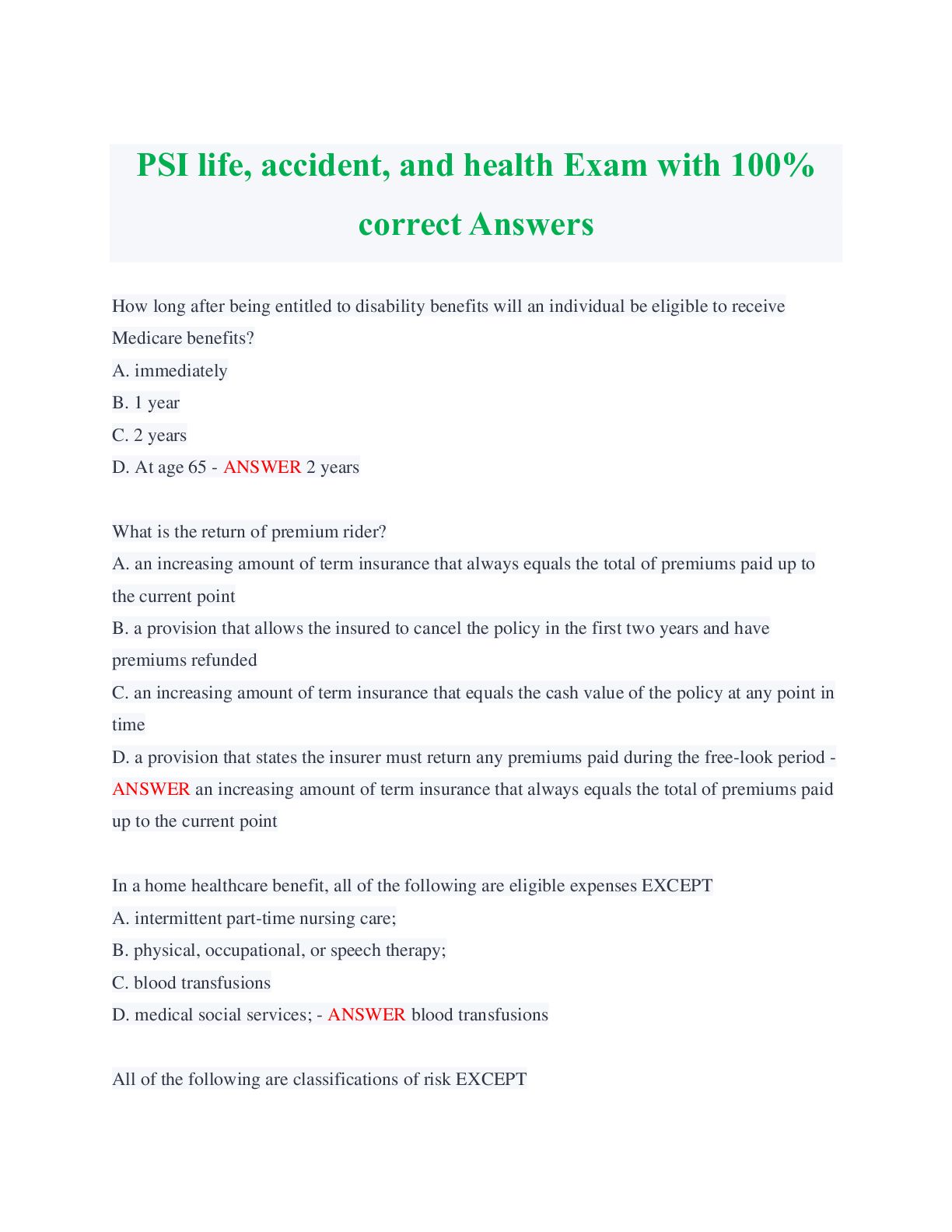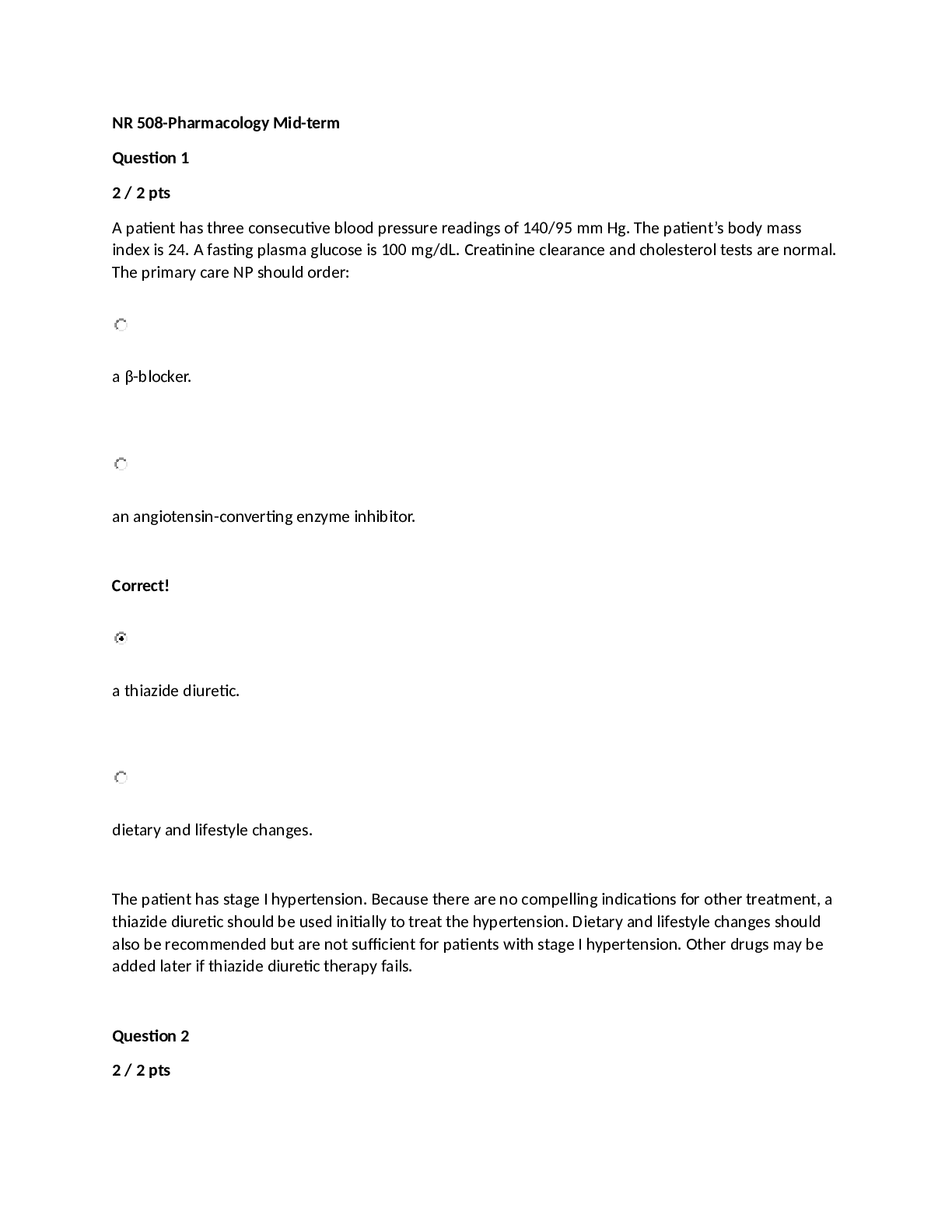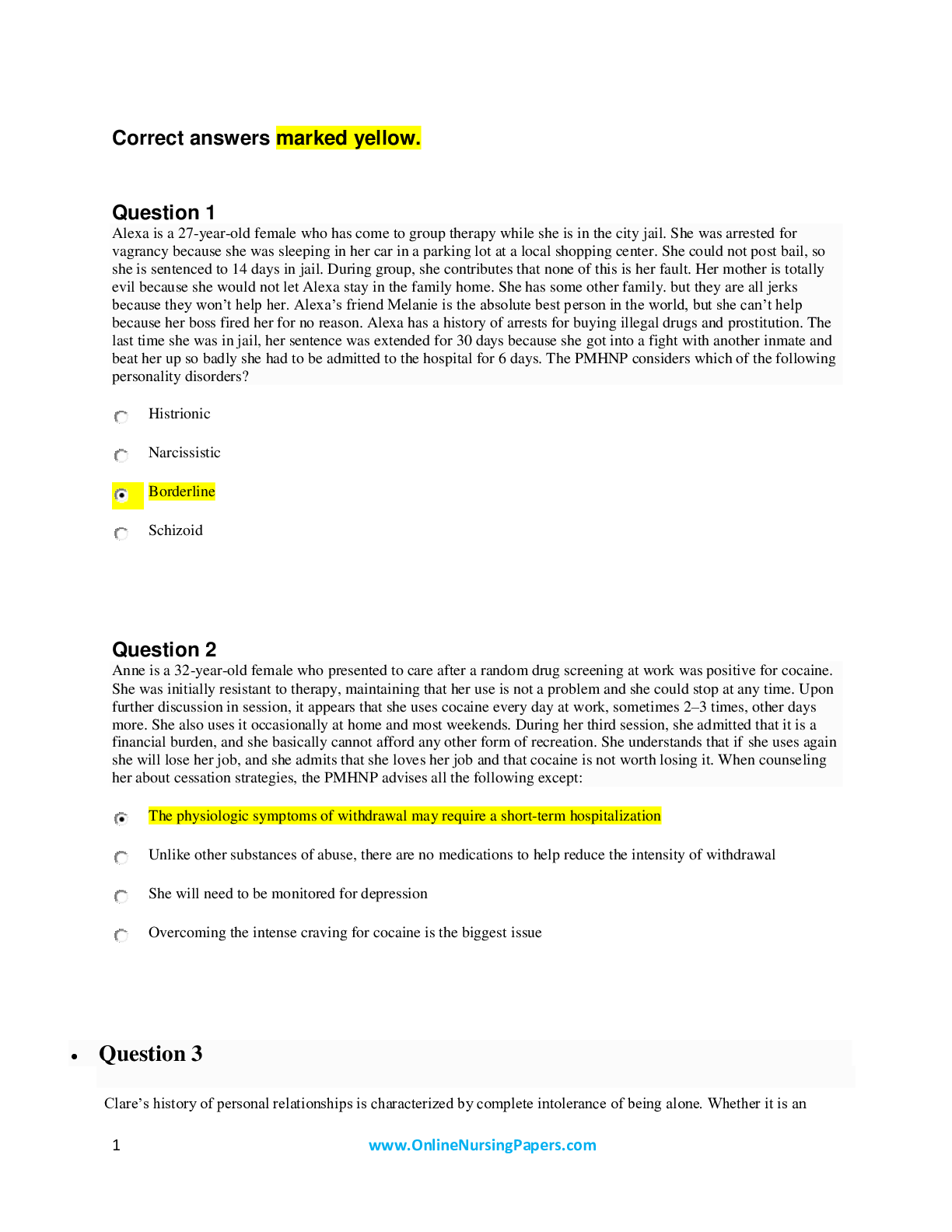Engineering > EXAM > Chapter 9: Materials Engineering Exam Questions with correct Answers (All)
Chapter 9: Materials Engineering Exam Questions with correct Answers
Document Content and Description Below
Alloy - ANSWER A Mixture of a metal with one or more additional elements. Often a combination of two or more metals. Biomaterial - ANSWER Substance that interacts with living systems. Buckyball ... - ANSWER Carbon sphere made up of a series of hexagons and pentagons, similar to a miniature soccer ball. Ceramic - ANSWER Nonmetallic solids made from inorganic materials (often minerals). A very hard, inorganic, refractory, nonmetallic material with little electrical conductivity. Composite - ANSWER Material that combines two or more materials. Compression strength - ANSWER Ability of a material to withstand a load that compresses or squeezes the material. Conductivity - ANSWER Measurement of how well electricity flows through a material. Corrosion - ANSWER Reaction between a material and the environment that leads to deterioration of the material. Destructive material test - ANSWER Test that destroys a material or somehow makes a material unusable. Elasticity - ANSWER Ability to return to the original dimensions when stress is removed. Flammability - ANSWER Ease with which a material will ignite. Manufacturability - ANSWER Ease with which the material can be transformed from raw material to a usable material. Materials engineering - ANSWER Design of machines, tools, and processes used to manufacture goods. Melting point - ANSWER The temperature at which the material changes from a solid to a liquid Metal - ANSWER Chemical element that belongs to one of the families of metals on the periodic table; a type of inorganic material with good conductivity to heat and electricity. Nanoparticle - ANSWER The most basic component at the nanoscale. Nanotechnology - ANSWER Design of new materials and devices at the scale of a nanometer. Nanotubes - ANSWER Nano-sized cylinders of carbon. Nanowire - ANSWER Small strand of material that ranges 1nm - 60 nm in width. Nondestructive Material Test - ANSWER Test that leaves the material intact and does not destroy the material. Plasticity - ANSWER Deformation that occurs from the yield point to the fracture point. Polymer - ANSWER Organic, noncrystalline material made up of a long chain of small molecules (primarily made up of carbon and hydrogen atoms) that form a much larger molecule. Radiography test - ANSWER Test that uses x-rays that pass through the material. Resistivity - ANSWER measurement of how well a material resists the flow of electricity. Shear stress - ANSWER Bending or twisting force, like the stress that occurs when using a wrench. Strain - ANSWER Deformation that occurs from stress. Stress - ANSWER Amount of force or load that is applied to a material. Tensile strength - ANSWER Ability of a material to withstand a force that pulls the material apart. Thermal conductivity - ANSWER Material property determined by how well heat is transferred through the material. Thermal Resistance - ANSWER Reciprocal of thermal conductivity. Ultrasonic test - ANSWER Test that uses sound waves that "bounce off" changes in the material to determine the internal comp [Show More]
Last updated: 2 years ago
Preview 1 out of 3 pages

Buy this document to get the full access instantly
Instant Download Access after purchase
Buy NowInstant download
We Accept:

Reviews( 0 )
$6.00
Can't find what you want? Try our AI powered Search
Document information
Connected school, study & course
About the document
Uploaded On
Nov 20, 2022
Number of pages
3
Written in
Additional information
This document has been written for:
Uploaded
Nov 20, 2022
Downloads
0
Views
66

















.png)


.png)





